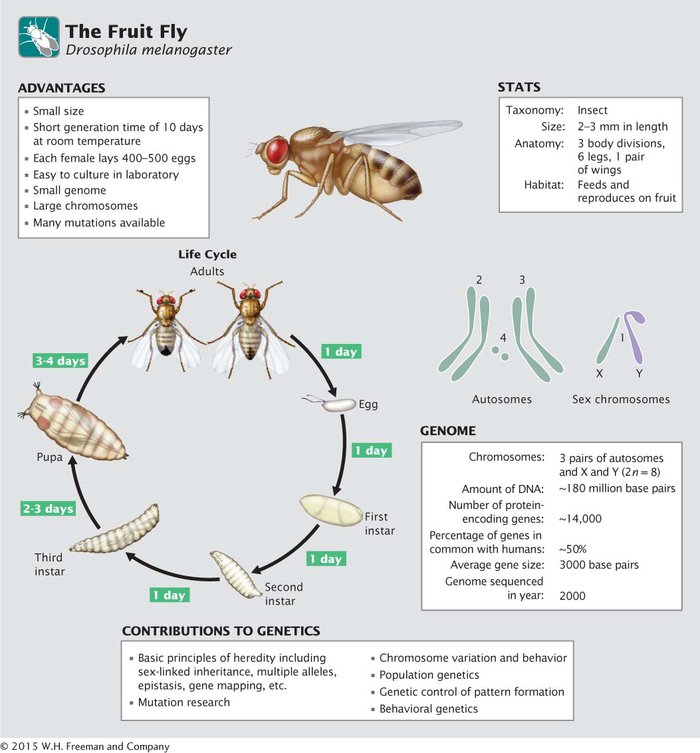Model Genetic Organism
The Fruit Fly Drosophila melanogaster
83
 Drosophila melanogaster, a fruit fly (Figure 4.9), was among the first organisms used for genetic analysis, and today it is one of the most widely used and best known genetically of all eukaryotic organisms. It has played an important role in studies of linkage, epistasis, chromosomal genetics, development, behavior, and evolution. Because all organisms use a common genetic system, understanding a process such as replication or transcription in fruit flies helps us to understand these same processes in humans and other eukaryotes.
Drosophila melanogaster, a fruit fly (Figure 4.9), was among the first organisms used for genetic analysis, and today it is one of the most widely used and best known genetically of all eukaryotic organisms. It has played an important role in studies of linkage, epistasis, chromosomal genetics, development, behavior, and evolution. Because all organisms use a common genetic system, understanding a process such as replication or transcription in fruit flies helps us to understand these same processes in humans and other eukaryotes.

84
Drosophila is a genus of more than a thousand described species of small flies (about 2 to 3 mm in length) that frequently feed and reproduce on fruit, although they rarely cause damage and are not considered economic pests. The best known and most widely studied of the fruit flies is D. melanogaster, but genetic studies have also been extended to many other species of the genus.
D. melanogaster first began to appear in biological laboratories about 1900. After first taking up breeding experiments with mice and rats, as mentioned earlier, Thomas Hunt Morgan began using fruit flies in experimental studies of heredity at Columbia University.
Morgan’s laboratory, located on the top floor of Schermerhorn Hall, became known as the Fly Room (see Figure 4.7b). To say that the Fly Room was unimpressive is an understatement. The cramped room, only about 16 by 23 feet, was filled with eight desks, each occupied by a student and his experiments. The primitive laboratory equipment consisted of little more than milk bottles for rearing the flies and hand-
In spite of its limitations, the Fly Room was the source of some of the most important research in the history of biology. There was daily excitement among the students, some of whom initially came to the laboratory as undergraduates. The close quarters facilitated informality and the free flow of ideas. Morgan and the Fly Room illustrate the tremendous importance of “atmosphere” in producing good science. Morgan and his students eventually used Drosophila to elucidate many basic principles of heredity, including sex-